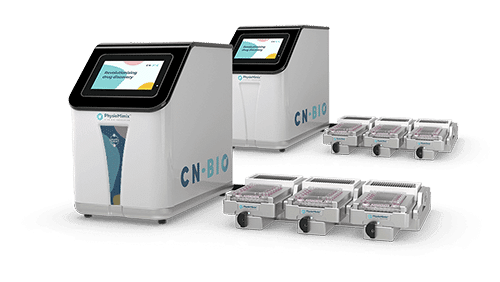Resource > Webinars >
The Rhythm of Life
Using Microfluidics To Mimic Blood Flow in Single- and Multi-Organ-on-a-Chip Models
Filed under: General OOC

Video content if present
Microphysiological Systems (MPS), or Organ-on-chip (OOC) technologies, enable researchers to model human biology in the lab via 3D microtissue-based studies.
Watch this webinar to learn:
- The importance of exposing cells to flow shear forces and stresses
- How do you go about emulating this in vitro?
- Why CN Bio choose to adopt an organ specific programmable approach to flow
- What effect does this have on single organ microtissue formation, cell phenotypes and functions?
- How to overcome the challenges of connecting multi-organ cultures together
For these advanced 3D in vitro models to realise their potential and remain viable for long periods of time (>4 weeks), it is imperative that their culture environments are as “in vivo-like” as possible. One major consideration when attempting to simulate the natural physiological environment of cells, is how to recreate the fluid shear forces and dynamic mechanical stresses that cells would normally be exposed to in a plate.
A programmable approach, whereby flow rates and profiles (pulsatile or continuous) can be tuned to match that of a specific human organ more accurately, has been adopted by CN Bio’s PhysioMimix® OOC lab-benchtop ready MPS. Here, the disciplines of bioengineering and biology work in partnership to emulate and test the effects of organ specific flow rates, ensuring physiologically relevant 3D microtissues are formed, cellular phenotypes and functions are maintained and microtissues respond appropriately to reference compounds.
Whilst working with single organs in isolation is challenging enough for Bioengineers to recreate, a more complex conundrum to solve is the question of – how to mimic a multi-organ environment in vitro such that their tissues and their environments become connected?
Join us to learn more about the science behind emulating in vivo blood flow in vitro, and why it is important for the accurate re-creation of human physiology in the lab.
View our Q&A document from the live event.
Speaker Information:
 Dr Graham Broder
Dr Graham Broder
Associate Director – Bio Engineering
CN Bio
 Alysha Bray
Alysha Bray
Scientist
CN Bio


 Dr Graham Broder
Dr Graham Broder Alysha Bray
Alysha Bray